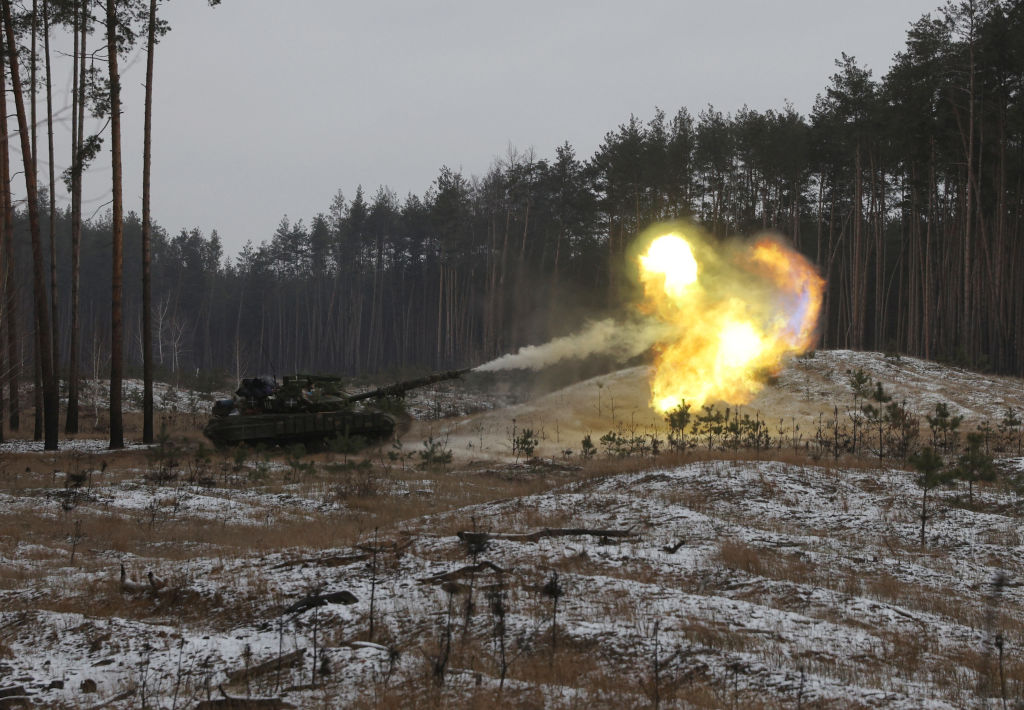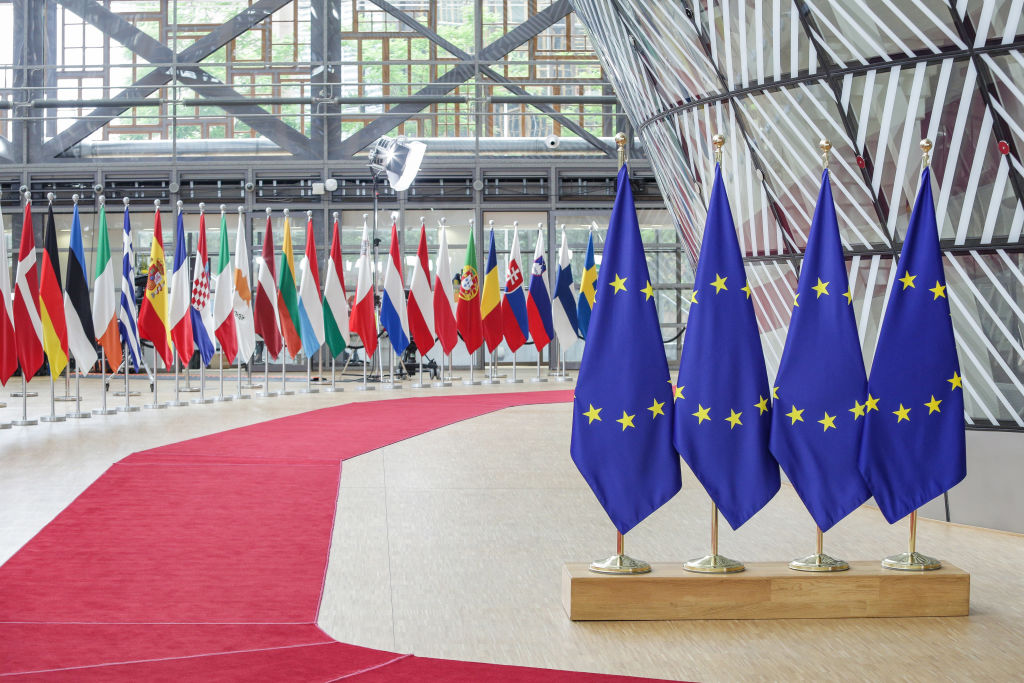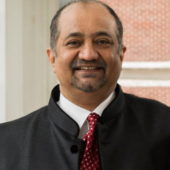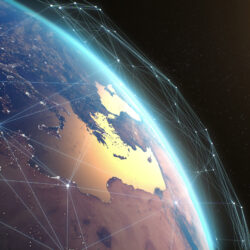
The Russian invasion of Ukraine has exposed and upended assumptions and the conventional wisdom about the international order and state behavior. In a liberal international order, where the prime motivation for states should be conforming to the dictates of neoliberalism, an imperial war for territorial expansion is unthinkable. Russia’s invasion of Ukraine has confirmed the weakening, if not the gradual collapse, of the liberal international order led by the U.S. and its allies. Additionally, the inexorable rise of China and its illiberal ethos has left students of global order in a precarious position: They can see the existing order recede with clarity, but they cannot see with even a modicum of certainty what will replace it in the near- and the long-term future.[1]
For over 30 years, the world has enjoyed a peaceful state that witnessed unprecedented global political integration, economic globalization, and cultural convergence around liberal values. This era began with the collapse of the Soviet Union in 1991 and the emergence of an unprecedented American unipolar moment. Historian of American foreign policy Michael Mandelbaum described this moment in history of unprecedented global domination by a single power as “hyperpower.”[2] While some scholars, such as he, see the American moment of unipolarity as lasting until 2015, I feel that it lasted only for 10 years, from 1991 to 2001. The terrible attack on the U.S. of Sept. 11, 2001, albeit by a nonstate actor, ended American hegemony, as the country was driven to try to reassert its domination by force. Dominant nations need to use force only when their hegemony has collapsed or is severely challenged. The challenge in this case came from the Middle East-South Asia region, and even though the U.S. fought two long wars in that region and reduced the potency of terrorism, neither has the U.S. fully succeeded in restoring its hegemony in the region nor fully eliminated the threat of nonstate actors. The decline of U.S. primacy began with those dastardly attacks on the U.S. on Sept. 11, 2001.[3]
Sensing American weaknesses, war fatigue, and the debilitating impact of the economic crisis of 2008 on the U.S., revisionist states such as Iran and Russia have been consistently testing the limits and robustness of the post-Cold War liberal order.[4] Even potential friends such as India and Saudi Arabia have not fully aligned with the U.S. and the West to preserve the liberal order so egregiously challenged by Russia’s invasion of and brutal war on Ukraine. Both Russia and India prefer a multipolar order to replace the current order. “Multipolar world” is a code for a world in which the U.S. is less influential. As the economic center and power shifts from the West to Asia and the Global South by 2050, it is forecast that China, India, Indonesia, Japan, Turkey, Brazil, and Mexico will be in the top 10 economies of the world along with the U.S., U.K., and Germany. These emerging powers are looking for a new ordering of the global system that more truly reflects the emerging distribution of power, norms, and wealth.
It is not clear whether the post-international liberal order will be unipolar, with the U.S. retaining its preeminence through the formation of new alliances such as the Indo-Pacific Strategy; bipolar, with China balancing the U.S. and competing with it for geopolitical and geoeconomic dominance; or multipolar, with the U.S., Europe, China, India, Russia, and Japan competing and cooperating to maintain an illiberal order that encourages cooperation in trade and security but eschews interferences in internal matters of weak states by powerful states. It is evident, however, that along with the liberal order the globalized economy too will take a hit, and we may see new processes such as “friendshoring” instead of “offshoring” and “slobalization” instead of globalization become the norm.
In this anthology by the New Lines Institute, we have invited scholars whose voices speak from diverse perspectives to examine and discuss the ongoing transformation in the global order. They advance a fascinating account of what is happening to the existing order and provide glimpses into what may be coming in the future.
The View From America
Professor Shibley Telhami draws a mixed picture of the post-Cold War order. He sees both the display of American primacy and its support for the rules-based international order, and the weakening and undermining of the same rules-based order by America through its invasion of Iraq in 2003 and its support for the relentless flouting of international norms by Israel. Professor Telhami narrates a fascinating tale of two invasions that bookend the post-Cold War order: the Iraqi invasion of Kuwait and the Russian invasion of Ukraine. Even though he does not dwell on the similarities, it is amazing how similar the claims made by both invaders are — that the other country has no right to exist as a separate country; it was always a part of “our” country.

Professor Telhami offers a unique perspective on Russia. He points out how even after defeat and very strenuous sanctions, Saddam Hussein’s regime survived in Iraq and he was removed only by a bigger and more expensive war. Professor Telhami similarly anticipates Russia to survive and remain a midrange power with an outsized nuclear arsenal regardless of the outcome of the war with Ukraine. In his discussion of the international system, professor Telhami continues to evaluate domestic trends and attitudes inside the U.S., emphasizing how the convergence among U.S. elites and political parties impacts U.S. support for the international order. He fears that domestic trends in the U.S. as well as the election of Donald Trump in 2016 and possibly again in 2024 show that the U.S. cannot be relied upon to underwrite the rules-based order as vigorously as before.
A Post-American View of the Coming World Order
Professor Amitav Acharya’s assessment of Russia’s invasion of Ukraine is deeply informed by the politics and concerns of the Global South. He points out that many scholars and policymakers in the West do not agree with the official Western narrative that the war was not provoked by NATO’s expansion. He argues that the war will neither unite nor strengthen the West; on the contrary, it will weaken and perhaps even hasten the demise of Western hegemony. Professor Acharya poses a very interesting question about U.S. and Western capabilities. He asserts that the West easily won the Cold War because they faced only one opponent, the Soviet Union, and asks: Can Washington now save the liberal international order when faced with two determined challengers, Russia in Europe and China in the Indo-Pacific?
After predicting the demise or weakening of the existing order, professor Acharya suggests that the global order that will succeed it will not be one of a China-West bipolarity or even a multipolar order, but rather he foresees a multiplex order. He describes the potential multiplex world as a regionalized order which is pluralist, has both formal organizations and informal partnerships, and will be shaped by civilizational norms coming from the Chinese, Indian, and Islamic heritages in addition to Western liberalism. Acharya offers a vision of the future informed by perspectives from non-Western civilizations and a critical view of the liberal order.
The View From Europe
Professor Raffaele Marchetti brings a European perspective to this anthology. He makes a persuasive and counterintuitive argument that rather than being an inflection point in contemporary history, the Russia-Ukraine war is actually consistent with the polarizing trend that began long before this war and will only hasten that ongoing polarization. He does not see the war precipitating a major change in the structure of world politics, but rather as a consequence of shifts that began during the period 2001-2008. Professor Marchetti argues that 2008 was the turning point in the international system. He argues that the trends that began in the 1990s that led to global integration experienced turbulence in 2008 with a severe economic recession that undermined the American-European dominated liberal order and initiated gradual polarization and division of the unified global economic system.

Marchetti argues, in keeping with conventional wisdom, that the future of the global order depends on the evolving relationship between the declining hegemon the U.S. and the emerging power China. Marchetti advances three possible scenarios of the emerging global order. He suggests that the world could be divided between the West and the rest, or two other possibilities: one in which China wins by integrating Eurasia (Europe and Russia) into its orbit and the U.S. is isolated, and the other in which the West expands and China is isolated.
South Asia Hopes for a Multipolar Order
This final essay in the anthology was written by a team of scholars from South Asia: Dr. Marufa Akter from Bangladesh, Dr. Farooque Leghari from Pakistan, and Dr. Shelly Johny from India. They begin their essay by recognizing that change is taking place at three levels: global, regional, and state level. At the global level, there is a fundamental shift in the balance of power with the rise of China, the revisionist aggression of Russia, and the sympathies of illiberal states toward both of them. At the regional level, the region itself is becoming more significant. I agree with their assessment. Even as the significance of the western part of the region — the Afghanistan and Pakistan policy theater — is declining for international security, the significance of the eastern end, with the Rohingya crisis and the prevailing tensions between India and China, is becoming more salient. The economic gains by both democracies, India and Bangladesh, have also increased the profile of the region as both China and the West compete to invest in these countries and seek strategic partnerships with them.
The authors anticipate the emergence of a two-level multipolar global balance of power. At the global level, they see blocs led by the U.S., China, Europe, and India, and at the regional levels by nations such as Brazil, Japan, South Korea, Iran, Israel, South Africa, and Nigeria. It is interesting that they see India and Europe remaining independent of the U.S. bloc. They predict three types of strategic behavior in the region. First, they anticipate that India will continue with its “multi-alignment approach,” which essentially means engaging with all major players. Next, they see Pakistan as migrating from the Western camp to the non-Western camp led by China and Russia. Finally, they expect the rest of the nations, especially those that border China, to seek to find a way to balance their national interests with the pressures and temptations stemming from engagement with China. The South Asian scholars see the need for the U.S. to do more diplomatic work in the region and develop its strategic relationships so that the countries of the region can begin to rely on it as much as East Asian nations like Japan and South Korea do. They advise the U.S. to act with prudence and patience while engaging this rising region.
In these essays, we have tried to provide a broad and diverse perspective on the fundamental shifts taking place in the global order and world politics. Not only is the balance of power changing, but so is the normative basis of the international system. Change is certain, but what is emerging in uncertain. We hope that these essays will provoke thought and also add to the global conversation on the change we are experiencing.
References
Blackwill, R. D., & Wright, T. (2020). The end of world order and American foreign policy. (No. 86). Council on Foreign Relations. http://ocd.lcwu.edu.pk/cfiles/Political%20Science/Maj/Pol.Sc-401/foreignPolicyofAmericaafterCovid19.pdf
Mandelbaum, M. (2019). The new containment: Handling Russia, China, and Iran. Foreign Affairs, 98(2), 123-131.
Mandelbaum, M. (2022). The four ages of American foreign policy: Weak power, great power, superpower, hyperpower. Oxford University Press.
Mearsheimer, J. J. (2019). Bound to fail: The rise and fall of the liberal international order. International Security, 43(4), 7-50.
Walt, S. M. (2018). The hell of good intentions: America’s foreign policy elite and the decline of U.S. primacy. Farrar, Straus, and Giroux.
[1] Mearsheimer, J. J. (2019). Bound to fail: The rise and fall of the liberal international order. International Security, 43(4), 7-50.
Blackwill, R. D., & Wright, T. (2020). The end of world order and American foreign policy. (No. 86). Council on Foreign Relations. http://ocd.lcwu.edu.pk/cfiles/Political%20Science/Maj/Pol.Sc-401/foreignPolicyofAmericaafterCovid19.pdf
[2] Mandelbaum, M. (2022). The four ages of American foreign policy: Weak power, great power, superpower, hyperpower. Oxford University Press.
[3] Walt, S. M. (2018). The hell of good intentions: America’s foreign policy elite and the decline of U.S. primacy. Farrar, Straus, and Giroux.
[4] Mandelbaum, M. (2019). The new containment: Handling Russia, China, and Iran. Foreign Affairs, 98(2), 123-131.





